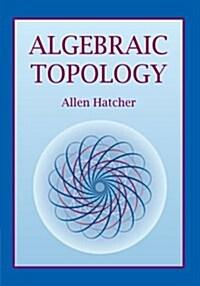책 이미지
![[eBook Code] RF and Microwave Transistor Oscillator Design](/img_thumb2/9780470512081.jpg)
책 정보
· 분류 : 외국도서 > 기술공학 > 기술공학 > 마이크로파
· ISBN : 9780470512081
· 쪽수 : 520쪽
· 출판일 : 2007-04-30
목차
About the Author ix
Preface xi
Acknowledgements xv
1 Nonlinear circuit design methods 1
1.1 Spectral-domain analysis 1
1.1.1 Trigonometric identities 2
1.1.2 Piecewise-linear approximation 4
1.1.3 Bessel functions 8
1.2 Time-domain analysis 9
1.3 Newton–Raphson algorithm 12
1.4 Quasilinear method 15
1.5 Van der Pol method 20
1.6 Computer-aided analysis and design 24
References 28
2 Oscillator operation and design principles 29
2.1 Steady-state operation mode 29
2.2 Start-up conditions 31
2.3 Oscillator configurations and historical aspects 36
2.4 Self-bias condition 43
2.5 Oscillator analysis using matrix techniques 50
2.5.1 Parallel feedback oscillator 50
2.5.2 Series feedback oscillator 53
2.6 Dual transistor oscillators 55
2.7 Transmission-line oscillator 60
2.8 Push–push oscillator 65
2.9 Triple-push oscillator 72
2.10 Oscillator with delay line 75
References 79
3 Stability of self-oscillations 83
3.1 Negative-resistance oscillator circuits 83
3.2 General single-frequency stability condition 86
3.3 Single-resonant circuit oscillators 87
3.3.1 Series resonant circuit oscillator with constant load 87
3.3.2 Parallel resonant circuit oscillator with nonlinear load 88
3.4 Double-resonant circuit oscillator 89
3.5 Stability of multi-resonant circuits 91
3.5.1 General multi-frequency stability criterion 91
3.5.2 Two-frequency oscillation mode and its stability 93
3.5.3 Single-frequency stability of oscillator with two coupled resonant circuits 94
3.5.4 Transistor oscillators with two coupled resonant circuits 96
3.6 Phase plane method 105
3.6.1 Free-running oscillations in lossless resonant LC circuits 106
3.6.2 Oscillations in lossy resonant LC circuits 108
3.6.3 Aperiodic process in lossy resonant LC circuits 110
3.6.4 Transformer-coupled MOSFET oscillator 112
3.7 Nyquist stability criterion 113
3.8 Start-up and stability 118
References 125
4 Optimum design and circuit technique 127
4.1 Empirical optimum design approach 128
4.2 Analytic optimum design approach 136
4.3 Parallel feedback oscillators 138
4.3.1 Optimum oscillation condition 138
4.3.2 Optimum MOSFET oscillator 139
4.4 Series feedback bipolar oscillators 142
4.4.1 Optimum oscillation condition 142
4.4.2 Optimum common base oscillator 143
4.4.3 Quasilinear approach 146
4.4.4 Computer-aided design 150
4.5 Series feedback MESFET oscillators 152
4.5.1 Optimum common gate oscillator 152
4.5.2 Quasilinear approach 154
4.5.3 Computer-aided design 157
4.6 High-efficiency design technique 162
4.6.1 Class C operation mode 162
4.6.2 Class E power oscillators 165
4.6.3 Class DE power oscillators 170
4.6.4 Class F mode and harmonic tuning 172
4.7 Practical oscillator schematics 177
References 182
5 Noise in oscillators 187
5.1 Noise figure 187
5.2 Flicker noise 196
5.3 Active device noise modelling 198
5.3.1 MOSFET devices 198
5.3.2 MESFET devices 200
5.3.3 Bipolar transistors 203
5.4 Oscillator noise spectrum: linear model 205
5.4.1 Parallel feedback oscillator 205
5.4.2 Negative resistance oscillator 214
5.4.3 Colpitts oscillator 216
5.5 Oscillator noise spectrum: nonlinear model 219
5.5.1 Kurokawa approach 219
5.5.2 Impulse response model 224
5.6 Loaded quality factor 235
5.7 Amplitude-to-phase conversion 239
5.8 Oscillator pulling figure 241
References 245
6 Varactor and oscillator frequency tuning 251
6.1 Varactor modelling 251
6.2 Varactor nonlinearity 255
6.3 Frequency modulation 258
6.4 Anti-series varactor pair 262
6.5 Tuning linearity 267
6.5.1 VCOs with lumped elements 267
6.5.2 VCOs with transmission lines 273
6.6 Reactance compensation technique 276
6.7 Practical VCO schematics 280
6.7.1 VCO implementation techniques 280
6.7.2 Differential VCOs 286
6.7.3 Push–push VCOs 292
References 296
7 CMOS voltage-controlled oscillators 299
7.1 MOS varactor 299
7.2 Phase noise 305
7.3 Flicker noise 310
7.4 Tank inductor 313
7.5 Circuit design concepts and technique 317
7.5.1 Device operation modes 317
7.5.2 Start-up and steady-state conditions 321
7.5.3 Differential cross-coupled oscillators 325
7.5.4 Wideband tuning techniques 326
7.5.5 Quadrature VCOs 331
7.6 Implementation technology issues 333
7.7 Practical schematics of CMOS VCOs 335
References 342
8 Wideband voltage-controlled oscillators 347
8.1 Main requirements 347
8.2 Single-resonant circuits with lumped elements 351
8.2.1 Series resonant circuit 351
8.2.2 Parallel resonant circuit 353
8.3 Double-resonant circuit with lumped elements 356
8.4 Transmission line circuit realization 360
8.4.1 Oscillation system with uniform transmission line 360
8.4.2 Oscillation system with multi-section transmission line 365
8.5 VCO circuit design aspects 369
8.5.1 Common gate MOSFET and MESFET VCOs 369
8.5.2 Common collector bipolar VCO 373
8.5.3 Common base bipolar VCO 376
8.6 Wideband nonlinear design 378
8.7 Dual mode varactor tuning 381
8.8 Practical RF and microwave wideband VCOs 387
8.8.1 Wireless and satellite TV applications 387
8.8.2 Microwave monolithic VCO design 391
8.8.3 Push–push oscillators and oscipliers 394
References 396
9 Noise reduction techniques 399
9.1 Resonant circuit design technique 399
9.1.1 Oscillation systems with lumped elements 400
9.1.2 Oscillation systems with transmission lines 402
9.2 Low-frequency loading and feedback optimization 410
9.3 Filtering technique 416
9.4 Noise-shifting technique 423
9.5 Impedance noise matching 426
9.6 Nonlinear feedback loop noise suppression 430
References 433
Index 437















![[eBook Code] RF and Microwave Transistor Oscillator Design](./img_thumb2/9780470512081.jpg)














